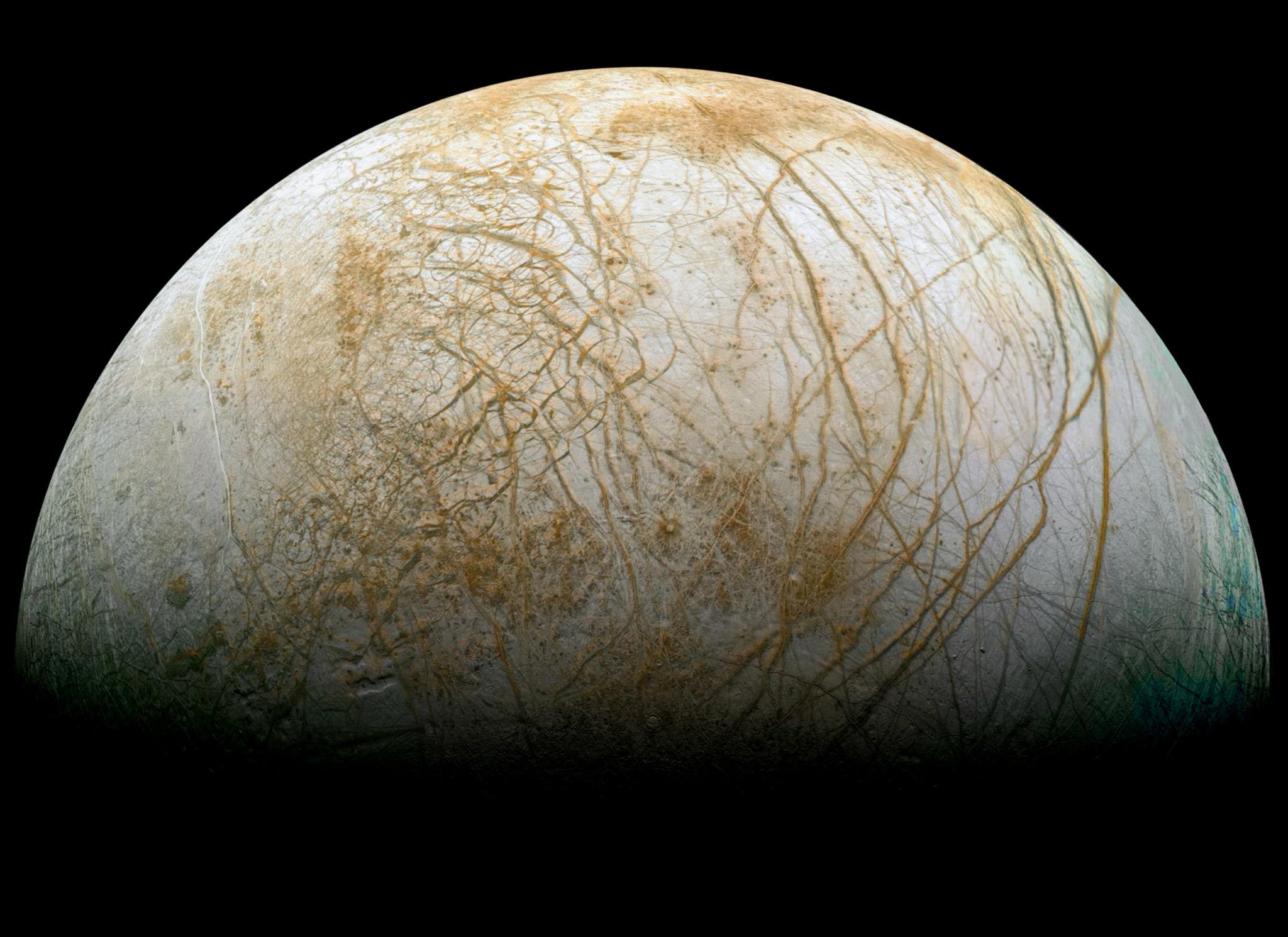

At the beginning of the year, NASA got some exciting news from the Obama Administration: The space agency is finally getting funding to send a probe to Jupiter’s moon Europa by the mid-2020s. With a subsurface ocean suspected to be lingering underneath its icy crust, Europa is one of the top candidates in our solar system for finding extraterrestrial life. And NASA hopes its probe can figure out if conditions are right for little aliens to exist.
To do that, the space agency needs the right instruments to study the environment surrounding the icy moon. NASA’s proposed Europa Clipper mission won’t be landing on Europa but will be “clipping” the space rock, swooping into its atmosphere 45 times over the course of two-and-a-half years. During these flybys, the various instruments attached to the clipper probe will gather as much data as possible before the probe dips back out again.
NASA hopes to answer the biggest question of all: Is Europa habitable?
Today NASA announced just what these integral instruments will be. According to the agency, 33 different proposals were considered for the probe, which were ultimately narrowed down to nine. All the instruments will work in tandem to answer looming questions about Europa: How deep and salty is the ocean? How thick and active is the moon’s ice shell? What’s that brown gunk we see in all the Europa pictures?
The answers to these questions, NASA says, could help answer the biggest question of all: Is Europa habitable?
Unfortunately, none of the nine instruments are designed to detect life directly. According to Curt Niebur, Europa program scientist at NASA Headquarters, the scientists at NASA couldn’t decide on an instrument that could best measure something that significant. “What became clear is we don’t have a life detector,” said Neibur at a press conference. “We don’t have consensus in the scientific community what we’d measure to say that this thing you’re looking at is alive.” Some instruments do claim to detect signatures of life, though contact with the planet is necessary.
Check out the nine instruments below and why NASA says they deserve a ride aboard the Europa Clipper.
Interior Characterization of Europa using Magnetometry (ICEMAG): a magnetometer designed to measure the magnetic field of Europa. According to NASA, understanding the moon’s magnetosphere will be like taking an MRI of the interior structure of Europa.
Plasma Instrument for Magnetic Sounding (PIMS): This instrument works in conjunction with ICEMAG to measure the plasma currents surrounding Europa. This could help the space agency get a better understanding of Europa’s ocean depth, its salinity, and a heavily debated topic in the scientific community–the thickness of the moon’s ice crust.
Mapping Imaging Spectrometer for Europa (MISE): An infrared spectrometer that measures the spectra (those squiggly lines) on Europa’s surface. Spectra lines act like unique fingerprints, indicating the materials that have been on Europa’s surface. One particular area of interest for NASA is figuring out what those lines of brown gunk are made of. These brown areas are associated with the youngest areas on Europa’s surface, which means they could be material that have recently erupted up from underneath the ice.

Europa Imaging System (EIS): NASA is hoping to get some amazing photos of Europa’s surface by equipping their probe with both a wide and narrow angle camera. Together, they’ll snap images of the moon at 164-foot resolution, getting super high-res pictures of the various ridges and unique surface features of Europa.
Radar for Europa Assessment and Sounding: Ocean to Near-surface (REASON): Ice penetrating radar for looking at the structures underneath the ice crust. This will give NASA a better idea of how structures underneath the ice have changed through time. There is also strong evidence to support the presence of lakes within the ice shelves, close to the crust’s surface, and this radar will help verify if they exist.

Europa Thermal Emission Imaging System (E-THEMIS): A thermal imager for detecting heat. This instrument will find the “hot spots” on Europa, which may indicate where the moon is most active. By hot spots, NASA means places that are slightly higher than Europa’s average temperature of -260 degrees Fahrenheit.
MAss SPectrometer for Planetary EXploration/Europa (MASPEX): This mass spectrometer will analyze Europa’s atmosphere. The materials found in the space above the moon will serve as a good indication of the materials that can be found on the surface and in the subsurface ocean.
Ultraviolet Spectrograph/Europa (UVS): NASA is really interested in the possibility of plumes living on Europa. Recently the Hubble Space Telescope spied water vapor above one of the moon’s poles, indicating the presence of these vents. The spectrograph will use ultraviolet light to hunt down these plumes and identify how active they are.
SUrface Dust Mass Analyzer (SUDA): The dust analyzer will work similarly to the mass spectrometer, measuring the particles ejected from the plumes identified by the spectrograph.
